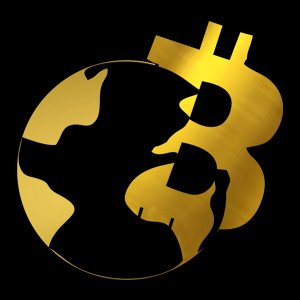


WINkLink PriceWIN
WIN to USD converter
How do you feel about WINkLink today?
About WINkLink (WIN)
What Is WINkLink?
WINkLink is the first decentralized oracle network within the TRON ecosystem. This platform is designed to bridge the gap between real-world data and smart contracts, enabling the latter to interact with external information sources seamlessly. By leveraging the robust capabilities of the TRON network, WINkLink offers developers the tools to create dynamic, responsive applications that can respond to real-world events and data. The WIN token plays a pivotal role in maintaining and operating this network, providing incentives and facilitating transactions.
At its core, WINkLink is crafted to address the limitations of smart contracts in accessing off-chain data. Traditional oracles often centralize this critical function, introducing potential points of failure and undermining the decentralized ethos of blockchain">blockchain technology. WINkLink disrupts this paradigm by offering a decentralized solution, ensuring that smart contracts on the TRON network can access reliable, secure, and trustworthy data feeds. This capability is crucial for the burgeoning field of decentralized finance (DeFi), where accurate and timely information is paramount for the execution of complex financial instruments and services.
Resources
Official Documents: https://doc.winklink.org/v1/doc/en/
Official Website: https://winklink.org/#/home
How Does WINkLink Work?
WINkLink operates through a sophisticated architecture that consists of three main components: external data sources, WINkLink nodes, and the TRON blockchain. External data sources can include APIs from various platforms, providing a wealth of information that can be utilized by smart contracts. WINkLink nodes are responsible for processing on-chain requests, retrieving data from these external sources, and publishing the results onto the blockchain. This decentralized network of nodes ensures that data is not only accurate but also resistant to manipulation or control by any single entity.
The integration process for developers is streamlined, allowing for easy incorporation of WINkLink's services into decentralized applications (dApps). The oracle network observes events both on and off the blockchain, initiating processes and responding to data requests in a manner that is both secure and efficient. By eliminating intermediaries and leveraging a trustless system, WINkLink enhances the user experience, providing services like provably fair random number generation, which is vital for gaming, lotteries, and other applications where unpredictability is key.
WINkLink's design is not only robust but also flexible, accommodating seamless upgrades and integrations. This adaptability ensures that the network can evolve with the ever-changing landscape of blockchain technology and the needs of its users. Security is also a top priority for WINkLink, with measures in place such as encryption, regular security audits, and multi-factor authentication for system administrators, ensuring that the oracle service remains resilient against threats.
What Is WIN Token?
WIN is the native token of the WINkLink network, serving multiple functions within its ecosystem. As a TRC-20 token on the TRON blockchain, it incentivizes node operators to provide accurate and reliable data. Developers utilize WIN tokens to pay for the oracle services, ensuring that their dApps can access the external data they require. The utility of the WIN token extends beyond just facilitating transactions; it also underpins the economic model of the WINkLink network, driving participation and engagement from both developers and node operators.
The WIN token's value is derived from its utility and the demand for WINkLink's services within the TRON ecosystem. As the platform continues to gain traction, particularly in the DeFi and blockchain gaming sectors, the WIN token is poised to play an increasingly important role. For investors and users alike, the WIN token represents not just a means of transaction, but also a stake in the future of decentralized oracles and the expansion of the TRON network's capabilities.
What Determines WINkLink's Price?
The price of WINkLink's native token, WIN, like any cryptocurrency, is influenced by a complex interplay of factors, chief among them being supply and demand dynamics within the market. Demand for WIN is driven by the utility and adoption of the WINkLink oracle network. As more decentralized applications (dApps) on the TRON blockchain integrate WINkLink's oracle services for reliable real-world data feeds, the demand for the WIN token increases. This is because dApp developers need WIN tokens to pay for these services, and nodes require them to participate in the network and earn rewards. The intrinsic value of WIN is thus closely tied to the performance and growth of the WINkLink ecosystem, making its adoption rate a critical determinant of its price.
Market sentiment also plays a crucial role in determining the price of WIN. Investor perception can be swayed by various factors, including technological advancements within the WINkLink network, strategic partnerships, and broader trends in the blockchain and DeFi sectors. Positive news and developments can lead to increased investor confidence, driving up demand and the token's price. Conversely, security concerns or regulatory challenges can lead to negative sentiment, impacting the price adversely. Additionally, the liquidity of WIN tokens on exchanges, availability on prominent cryptocurrency platforms, and the overall health of the crypto market are significant contributors to its price volatility.
Furthermore, the WIN token's price is subject to the macroeconomic factors that affect the broader cryptocurrency market, such as regulatory news, changes in blockchain technology, and shifts in the global economic landscape. As a participant in the larger ecosystem of digital assets, WIN token is not immune to the waves of speculative trading that can cause rapid price fluctuations across the crypto market. Investors and users must stay informed about both the micro and macroeconomic indicators that influence WIN's valuation to navigate the market effectively. With blockchain and cryptocurrency gaining traction globally, understanding these price determinants is essential for anyone looking to engage with WINkLink as a user or investor.
For those interested in investing or trading WIN, one might wonder: Where to buy WINkLink? You can purchase WINkLink on leading exchanges, such as Bitget, which offers a secure and user-friendly platform for cryptocurrency enthusiasts.
AI analysis report on WINkLink
Live WINkLink Price Today in USD
WINkLink Price History (USD)
 Lowest price
Lowest price Highest price
Highest price 
What is the highest price of WINkLink?
What is the lowest price of WINkLink?
WINkLink Price Prediction
When is a good time to buy WIN? Should I buy or sell WIN now?
What will the price of WIN be in 2026?
What will the price of WIN be in 2031?
FAQ
What is the current price of WINkLink?
What is the 24 hour trading volume of WINkLink?
What is the all-time high of WINkLink?
Can I buy WINkLink on Bitget?
Can I get a steady income from investing in WINkLink?
Where can I buy WINkLink with the lowest fee?
WINkLink news
WINkLink updates
WINkLink Market
WINkLink Holdings
WINkLink holdings distribution matrix
WINkLink holdings by concentration
WINkLink addresses by time held

Global WINkLink Prices
- 1
- 2
- 3
- 4
- 5
How to buy WINkLink(WIN)

Create Your Free Bitget Account

Verify Your Account

Convert WINkLink to WIN
Join WIN copy trading by following elite traders.
New listings on Bitget
Buy more
Where can I buy WINkLink (WIN)?
Video section — quick verification, quick trading

WIN to USD converter
WINkLink ratings
Bitget Insights





Related assets
Trade
Earn
WIN/USDT
SpotWIN/USDT
Margin































